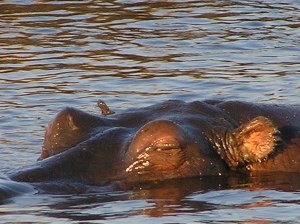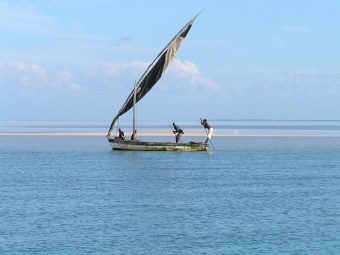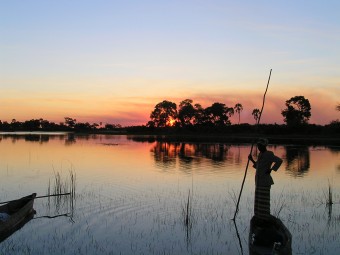Vaccination
Okay so I am Australian and I want to travel the world. I live on, what is basically a large island we are well protected from the rest of the world’s diseases. We have very strict quarantine laws, we have safe drinking water and strong food safety laws. In recent years we have had some Ross River Fever and our Bats have a rabies/lyssaviruses, but on the whole we are a very safe country to travel in. Oh except for the venomous snakes (Australia has about 140 different land snake, and 32 water snakes. Around 100 are venomous, but the number that could actually kill you is only 12). Let’s not forget the spiders, giant crocodiles and perhaps the drop bears, but that is a whole different topic, today we are talking about vaccinations. Before I started to travel overseas in 2005 I went to the local travel Doctor and asked what I needed for Africa and this is what he said.
- Hepatitis A
- Hepatitis A vaccination is thought to provide lifelong immunity. Hepatitis A vaccination can be given alone or as a combination with Hepatitis B or Typhoid.
- Hepatitis B
- A completed course of vaccination is thought to confer life-long immunity.
- Cholera
- The oral cholera vaccine also provides some protection against one of the more common forms of traveler’s diarrhea. Normally the vaccine is taken in two doses 1-6 weeks apart.
- Typhoid Fever
- A completed course of typhoid vaccination provides protection for up to three years.
- Yellow Fever
- The vaccination for yellow fever provides a high level of immunity for a period of ten years. The vaccination is usually quite safe but is unsuitable for a small number of individuals.
- Rabies
- Normally the vaccine is used before departure to provide immunity in the event of an animal bite. Rabies vaccination provides effective protection against this serious illness. Normally the course requires three visits to our clinic within about one month.
- Influenza
- Although the vaccine only provides immunity for about one year it normally has very few side effects.
- Malaria –
- Malaria is an infection it is passed on via the bite of an infected mosquito. Travellers to tropical regions of Asia, Africa, and Central or South America are at risk. In malarial areas, avoid mosquito bites by wearing long, loose clothing, using insect repellents and avoiding outdoors at dusk and dawn. Anti-malaria tablets.
- Tetanus
- Protection against tetanus should be considered for all travelers and normally lasts about ten years.
- Meningococcal Meningitis
- The vaccine most commonly used for travelers protects against multiple strains of Meningitis and provides immunity for up to three years.
- HIV/AIDS
- The human immunodeficiency virus (HIV) causes acquired immune deficiency syndrome (AIDS). There is no vaccine or cure for HIV or AIDS, but medication can manage HIV-related illnesses and AIDS.
- Japanese encephalitis vaccine
- This should be considered for travelers to affected regions of Asia.
- Bilharzia
- Bilharzia is a parasitic disease caused by worms that enter a person through the skin when they come into contact with contaminated fresh water. The parasites enter the skin, migrates through the body to the blood vessels of the lungs and liver. It advances to the veins around the bowel or bladder, lays eggs which can either be passed in the urine or faeces, or remain in the tissues in the human host in the liver or bladder.
- Giardia infection (Giardiasis)
- Giardiasis also known as gastro. It is caused by the parasite Giardia Lamblia. Giardiasis can be spread by contaminated drinking water. It can also be spread by faecal contamination of public water. Giardiasis can be treated with medications.
- Varicella (chicken pox)
- Vaccination of children against chickenpox not only prevents serious disease in childhood, but also ensures immunity in adolescence and adulthood, when complications from the disease can have severe outcomes.
- Dengue Fever
- Dengue fever is a viral disease spread by mosquitoes in tropical and subtropical regions. There is no specific medical treatment and no vaccine. The best way to protect against dengue fever is to avoid mosquito bites when in affected areas.
- Polio
- A single booster during adulthood is thought to result in lifelong immunity. Polio can be given alone or as part of a combination with other vaccines.
- Measles mumps and rubella
- An effective combination of these vaccines can be given as a single dose and it provides long-lasting immunity.
- Diphtheria
- Boosters are normally given as a combination with other vaccines in a single needle formulation.
Oh my God is he kidding, I know right, there is no way I am going to do all of that, but luckily for me here in Australia a lot of that has already been done in childhood or through work related vaccines. So we can tick off a possible 10 (the ones in bold) off that list straight away and some may not be relevant to the destination you are going to travel to for example my first trip away was Africa so I am not going to need Japanese encephalitis.
Interestingly the varicella vaccine is fairly recent to Australia so therefore I did not get vaccinated in childhood. This was one that my Doctor pushed quiet strongly and I argued with him that I was immune to it, as I had nursed all three of my children and not been infected. He insisted that I be tested and I was right I had a natural immunity.
I did not get the Rabies vaccination for my first two African visits but by the third time I was going overseas, this time to the Middle East I thought I had pushed my luck too far. Rabies if contracted WILL KILL YOU there is no cure once you show the first signs and symptoms.
My Doctor did not insist on the cholera vaccine so I did not question his judgment and Meningococcal vaccine is also fairly new and was not offered as strongly as others.
Malaria tablets are started as a course two weeks prior to your departure so you have an existing immunity and continued for two weeks after leaving the affected areas. I was taking Doxycycline which is the cheapest and most common daily administered medication for Malaria. On the second day in Africa when we are heading out of South Africa and into Mozambique I noticed this rash and I was scratching my skin off my arms and torso. I discuss my options with the driver of the truck, he offered to drop me at a Doctor clinic before we crossed the border (South Africa has a much more reliable medical system than Mozambique). I was quiet nervous when they dropped me on the side of the road in front of this building that looked more like a shack than a GP office, and then they drove away. I went inside as I had few other options, once inside it more or less looked like your typical doctors surgery. People waiting around reading magazines, children coughing and sneezing and the general look of impatience people get when they have been waiting for a long time. The GP gave me some cream for the rash and some tablets for the itch and a new medication for the Malaria. He had all the require medications in his office so he was the Doctor and Pharmacist in one convenient location. That night we were heading to a beach party in a town called Vilankulo on the coast of Mozambique. All I will say at this point is you should always read the labels on your medication, especially the bit about mixing medication with alcohol, I was sick for days.
So when it came done to it I only really needed a couple of injections and some basic hygiene and mosquito protection oh and if I met that certain special person to practice safe sex.
So now here we are 10 years later and I need to revisit this list and see what is still current and which ones I will need to have done again. Oh joy wish me luck !










